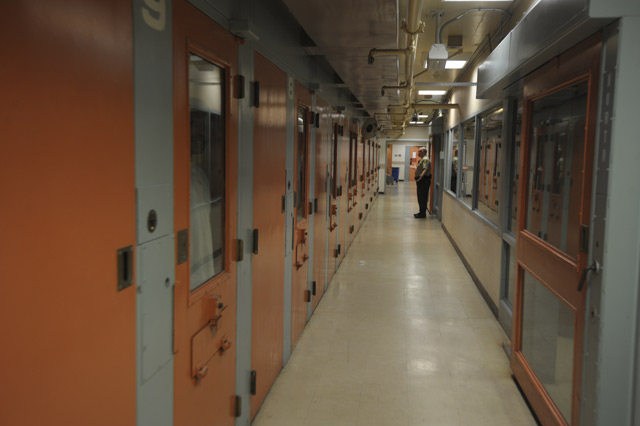County Standardizing ‘Own Recognizance’ Releases
Aims to Erase Discrepancies Between North and South County Cases

In an effort to tackle disparities for defendants in North and South County, a group of Santa Barbara officials have been meeting regularly to standardize the way defendants are released on their own recognizance (OR), or without bail.
People involved in the justice system talk privately about the supposition that South County defendants are much more likely to be let out of jail for free than their North County counterparts. Many reasons for this anecdotal discrepancy exist. For starters, two cases with similar charges — one in the south, the other in the north — are never identical. The defendants have their own set of circumstances, including criminal histories and living situations, both factors that come into play when authorities with Pre-Trial Services determine who is released and who isn’t.
That makes it difficult to compare “apples to apples,” explained Tanja Heitman, deputy chief probation officer. Moreover, crime in North County tends to be more serious; South County has many petty offenses committed by tourists and university students. Mag Nicola, chief deputy district attorney overseeing North County, asserted, “Defendants who are similarly situated receive the same treatment.” But there is a certain amount of subjectivity involved: Others spoke about longstanding cultural differences in the north and south parts of the county.
Darrel Parker, CEO of the Superior Court, explained the Pre-Trial Services departments have historically not acted uniformly: “The South County was doing more creative things in pretrial, and the North was unaware of those things going on,” he said. This included using supervised release more frequently. “For the first time we were recognizing there were opportunities to do better things,” he said. Last year, he appointed a countywide head of Pre-Trial Services.
Today, Parker said, the discrepancy is less likely to be true. Exact figures are not currently available, but the courts hired a consultant to dissect the pretrial population more closely. That hasn’t clearly happened in the past. Parker said individuals arrested for domestic violence, for instance, are ineligible for OR and may spend several days in jail before appearing before a judge. “Are those counted in the pretrial?” he asked. “I’m not certain they are.”
The workgroup, which has met a half-dozen times this year, has launched a “risk assessment tool” in a pilot program, which is expected to be formally adopted in the first half of 2017. The tool — modeled after the Virginia Pretrial Risk Assessment Instrument — allows OR investigators to more objectively determine whether or not an inmate should be released without bail. It is essentially a checklist “to help inform a decision for our Pre-Trial offices,” Parker said. “It is not an end all, be all.” There is also potential to release more people on supervised release, Parker added, but “we don’t know what that impact will be.”
That the effort parallels the nation’s broader goal of getting people out of custody is promising, supporters stress. Doing so, proponents say, also makes fiscal sense. In Santa Barbara, it costs $47,000 to keep an inmate in County Jail each year.
A new third-party report, which studied ways to spend state money from realignment (also known as AB 109), found the county has “a very high number of misdemeanor arrests as compared to other jurisdictions.” Specifically, arrests for disorderly conduct increased 30-fold in roughly the last decade. About 20 percent of the roughly 1,000 total inmates are misdemeanor offenders.
What’s more, 73 percent of Santa Barbara detainees are awaiting trial, higher than the statewide average of 63 percent. According to Sheriff’s spokesperson Kelly Hoover, the custody staff has a new way of calculating the percentage of inmates who are “pretrial,” now at 51 percent. She explained that some inmates have multiple cases so they should not necessarily count as “pretrial” as they could be serving a sentence in another case.
Meanwhile, state lawmakers unveiled last week new legislation to abolish bail amounts, arguing they disproportionately affect people in poverty. Compared to the rest of the nation, California has a high bail schedule, which varies by county. The legislators argued research shows bail money does not necessarily compel defendants to appear in court.
Martin Basaldua, a bondsman with Superior Bail Bonds, disagreed. Bail money is effective at getting defendants to show up in court because a third party is involved, he stated. But he added that the amounts should be reduced as they are much higher than they were a decade ago.



